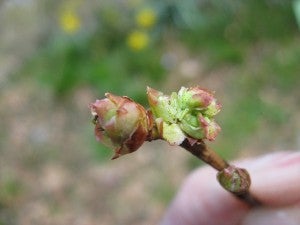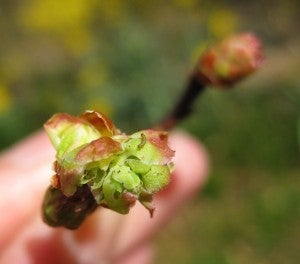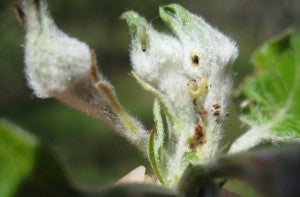April 26 winter moth update
Winter moth eggs started hatching on April 19. Over the past week, all the eggs at the monitoring tree in Kingston have turned blue and then hatched. I expect all eggs will hatch by April 27th. Eggs on other monitored trees in other towns hatched pretty similarly. It is too late now, in most areas, to spray an insecticide to stop winter moth caterpillars from entering buds. It is probably not too late in cooler areas, such as Little Compton.
On April 23 I observed many winter moth caterpillars inside of unsprayed apple and pear flower buds. Once caterpillars are inside buds they are protected from insecticide until buds open. For apple trees, the next opportunity to apply an effective insecticide is at Pink, when flower buds have separated, but before blossoms open.
This week I intend to pry open many sprayed apple and blueberry buds to see if winter moth caterpillars are inside. When looking for winter moth caterpillars, mostly what you look for is the caterpillar frass – caterpillar poop. When caterpillars are small they can be very difficult to find. Frass in blueberry buds is black, but frass in apple buds tends to be brown or orange-brown. Attached are pictures of frass inside apple and blueberry buds, as well as small caterpillars.
If additional insecticide sprays are needed, insecticide choices include DiPel or another Bt (Bacillis thuringiensis) product as well as most other insecticides such as spinosad (Entrust, Captain Jack’s Deadbug brew, Conserve – for ornamentals), Sevin, Malathion, Avaunt, and synthetic pyrethroids.
 Home
Home Browse
Browse Close
Close Events
Events Maps
Maps Email
Email Brightspace
Brightspace eCampus
eCampus





